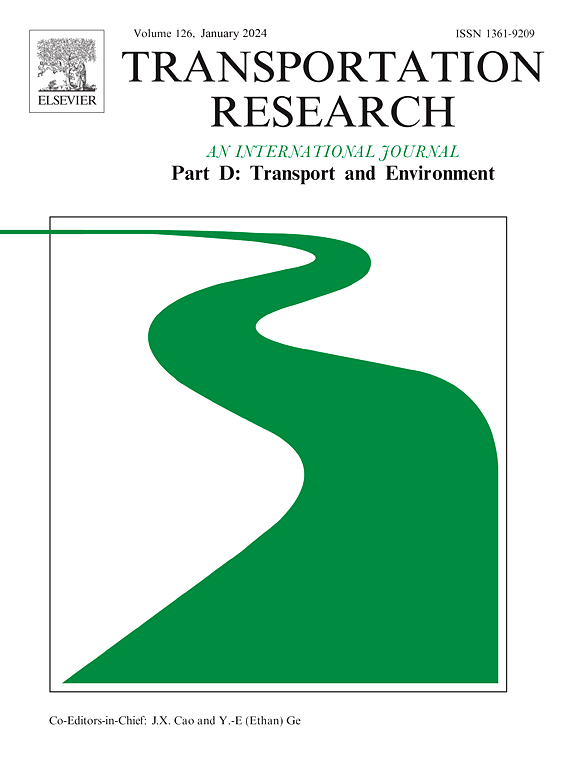Uncovering horizontal and vertical inequities of individual accessibility using mobile phone data
IF 7.3
1区 工程技术
Q1 ENVIRONMENTAL STUDIES
Transportation Research Part D-transport and Environment
Pub Date : 2025-04-12
DOI:10.1016/j.trd.2025.104755
引用次数: 0
Abstract
Reducing accessibility inequities among all individuals has been established as one of the sustainable development goals for fostering an equitable society. To address the limitations of conventional aggregated accessibility measures, this study quantifies individual-level accessibility inequities among 2.12 million phone users in Shenzhen, China, using mobile phone tracking data. The findings reveal significant horizontal and vertical inequities in individual accessibility, driven by both spatial disparities and interpersonal variations within residential areas. Human mobility significantly mitigates horizontal inequities by 33%-52% and vertical inequities by 40%-76% across three types of urban facilities, particularly benefiting users in regions with lower place accessibility. The study also identifies vulnerable individuals with low accessibility levels, emphasizing the joint influence of individual mobility and neighborhood facility availability. These findings provide new empirical insights into the mechanisms of accessibility inequities and offer methodological guidance for selecting appropriate accessibility measures in equity studies.
利用移动电话数据揭示个人可访问性的横向和纵向不平等
减少所有人之间的无障碍不平等已被确立为促进公平社会的可持续发展目标之一。为了解决传统综合无障碍措施的局限性,本研究利用手机追踪数据,量化了中国深圳 212 万手机用户中个人层面的无障碍不平等现象。研究结果表明,由于居住区内的空间差异和人际差异,个人可及性存在明显的横向和纵向不平等。在三种类型的城市设施中,人的流动性极大地缓解了横向不平等33%-52%,纵向不平等40%-76%,特别是对那些场所可达性较低地区的用户而言,受益尤为明显。研究还发现了无障碍程度较低的弱势人群,强调了个人流动性和社区设施可用性的共同影响。这些发现为无障碍环境不平等的机制提供了新的经验见解,并为在公平研究中选择适当的无障碍环境衡量标准提供了方法指导。
本文章由计算机程序翻译,如有差异,请以英文原文为准。
求助全文
约1分钟内获得全文
求助全文
来源期刊
CiteScore
14.40
自引率
9.20%
发文量
314
审稿时长
39 days
期刊介绍:
Transportation Research Part D: Transport and Environment focuses on original research exploring the environmental impacts of transportation, policy responses to these impacts, and their implications for transportation system design, planning, and management. The journal comprehensively covers the interaction between transportation and the environment, ranging from local effects on specific geographical areas to global implications such as natural resource depletion and atmospheric pollution.
We welcome research papers across all transportation modes, including maritime, air, and land transportation, assessing their environmental impacts broadly. Papers addressing both mobile aspects and transportation infrastructure are considered. The journal prioritizes empirical findings and policy responses of regulatory, planning, technical, or fiscal nature. Articles are policy-driven, accessible, and applicable to readers from diverse disciplines, emphasizing relevance and practicality. We encourage interdisciplinary submissions and welcome contributions from economically developing and advanced countries alike, reflecting our international orientation.

 求助内容:
求助内容: 应助结果提醒方式:
应助结果提醒方式:


